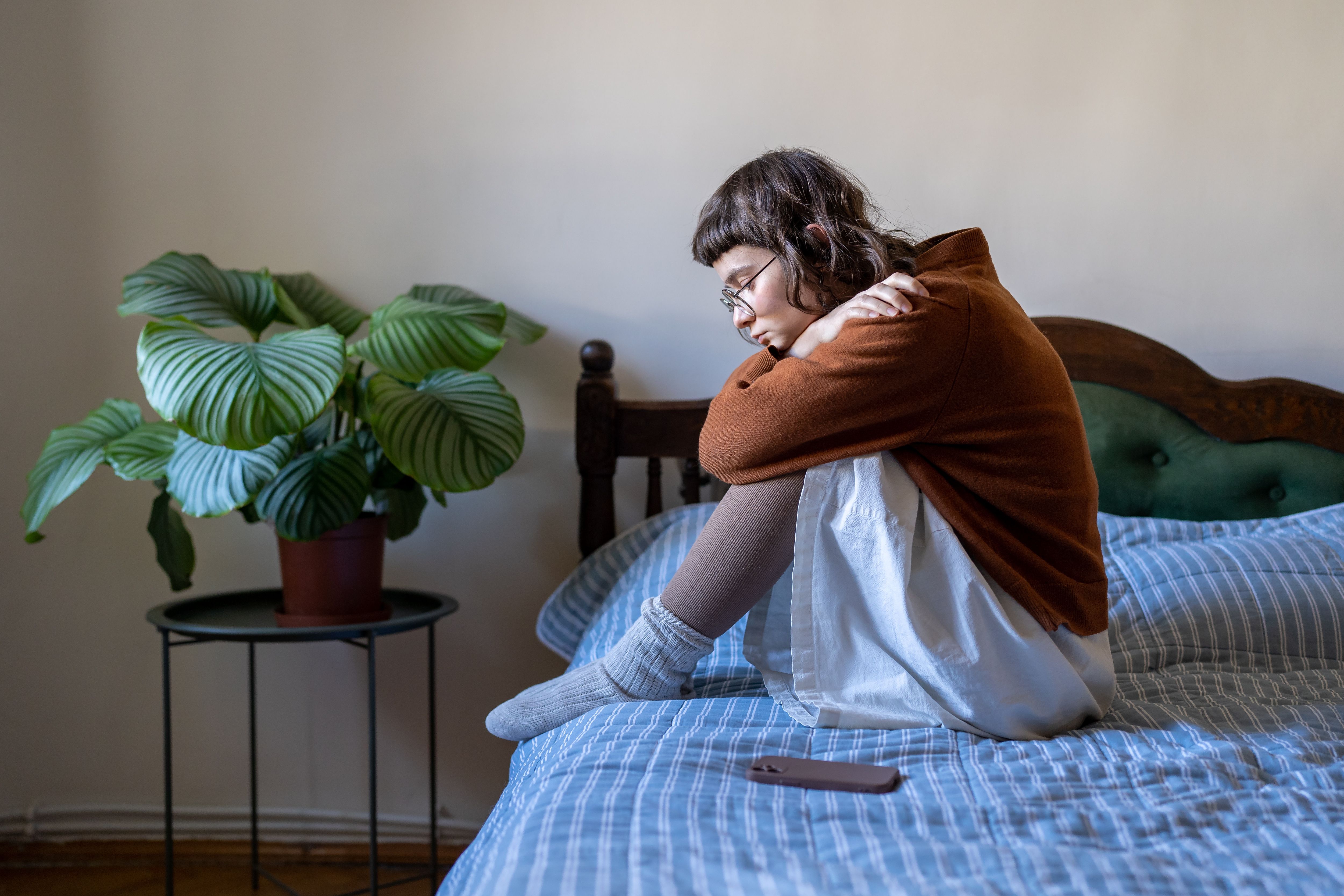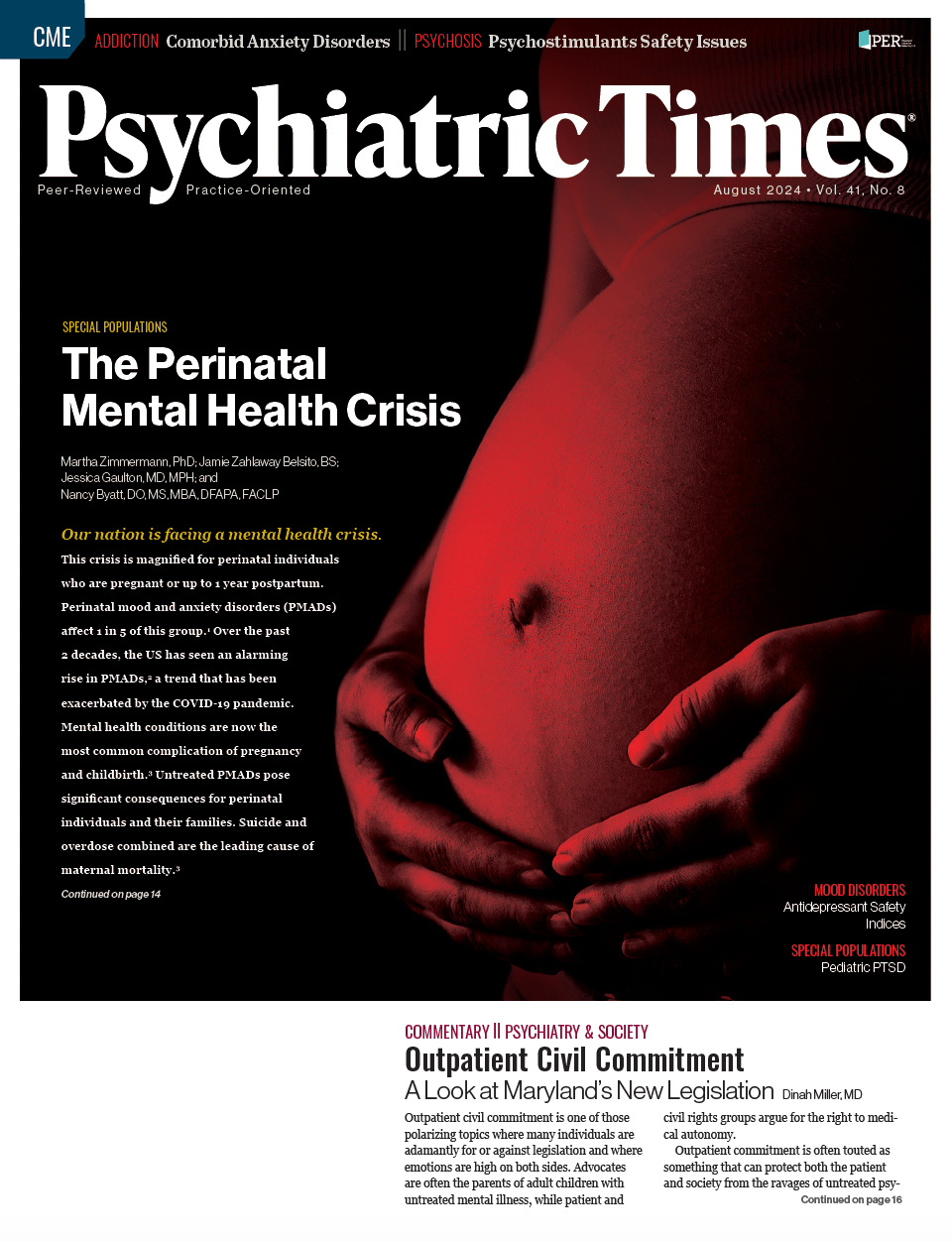
Publication
Article
Psychiatric Times
The Hidden Suffering of Social Anxiety Disorder
Author(s):
Social anxiety disorder: increased screening and recognition are essential for proper diagnosis, and psychotropic and psychotherapeutic options can be effective.
DimaBerlin/AdobeStock

TALES FROM THE CLINIC
In this installment of Tales From the Clinic: The Art of Psychiatry, we examine a case of social anxiety disorder (SAD), an underappreciated entity that is often confused with shyness and temperamental disposition. SAD is common and thought to rank third among psychiatric conditions, after depressive and addictive disorders, worldwide; however, it is often challenging to diagnose because social interactions are heavily modulated by cultural and gender considerations as well as setting-specific considerations including work and school expectations.
Case Vignette
“Damien” is a 27-year-old medical trainee who presents to the clinic with the complaint of anxiety exacerbated by social situations. He outlines anxiety that he noted as early as age 10 years: “We have a big family, lots of uncles, aunts, cousins. Going into those gatherings was always so hard even though everyone there cared—and I have known them all since birth.” In high school, he had excellent grades but struggled when he tried taking a communications elective and recalls panic symptoms before a group presentation: “I had sweaty palms and my heart was skipping. I could not collect my thoughts; I must have looked like an idiot.”
The solution Damien devised for this type of situation was to be the notetaker for the group, who prepared PowerPoints and did background work. That way, he felt he was still participating and his work was appreciated, but he did not have to be in the spotlight. He did experience further challenges when he tried to ask someone out on a date, and when he had trouble placing his food order in front of others in a restaurant. He jokingly adds that being a medical student helps as he can always pretend he is busy, instead of saying he feels uncomfortable in social gatherings. He answers by text rather than calling when he has the chance. Other specific situations included difficulty calling to schedule his own medical appointments and going through mock examinations. He finds introducing himself to patients to be challenging and feels his voice is shaky when he presents in rounds.
Damien is presenting to care because he feels his symptoms have brought about significant impairment in his social life and career, preventing him from meeting new friends and from expanding his scholarly activities as he cannot present his research findings for fear of getting panicky.
Defining Social Anxiety
Figure 1. Examples of Situations That Can Trigger Social Anxiety

Social anxiety refers to the anxiety occurring directly in conjunction with social situations and the fear of being scrutinized in those situations. The gamut of situations that could trigger social anxiety ranges from meeting or talking to unfamiliar individuals, to presenting or performing in front of others, to acts that are seemingly mundane such as eating with others present (Figure 1). Some anxiety in social situations may be situation-congruent (eg, major presentation that could determine a promotion), but the core of SAD is the underlying layer of negative cognition suggesting to the beholder that they will be judged, ridiculed, or otherwise negatively perceived. A traumatic experience in social settings is not needed as antecedent of SAD, and the disorder is far-reaching, causing impairment in multiple life functional areas. A duration of 6 months is needed for an SAD diagnosis as per the DSM-5.
As with other anxiety disorders, clinical manifestations must be considered within developmental stage parameters. For instance, in a child, SAD may manifest as refusal to go to school, thereby raising the possibility of a separation anxiety disorder. In a teenager or young adult, SAD may interfere with asking others out or engaging with new friends (eg, when starting a new sport or moving to middle/high school or college). In individuals with medical conditions with noticeable movement abnormalities or postaccident/postsurgery disfigurement, some anxiety about interacting with others is common, and the diagnosis of SAD can only be applied in those situations where the anxiety is excessive or unrelated. SAD also includes paruresis, the fear of urinating in a public bathroom.
Figure 2. Global and Lifetime Prevalence of SAD

The prevalence of SAD in the US is about 7%, with higher prevalence in women than men.1 SAD has a global prevalence ranging from 5% to 10% and a lifetime prevalence of 8.4% to 15% (Figure 2). The prevalence rose slowly from the 1960s to the early 2000s with a preponderance in married, more educated populations.2 The relationship between SAD and problematic internet use is not well understood but a small study in medical students has shown an association between anxiety and excessive internet usage.3 Using alcohol or substances before or during events to mitigate distress is common, as is blushing, a hallmark physiological response of SAD.4
According to the DSM-5, SAD can have a subtype of performance-only anxiety, which is given when the fear is restricted to speaking or performing in public. This fear could be particularly impairing if/when school or work requires performance in front of others, such as in public speaking class or a musical performance.
Avoidance of the feared situation is a common feature of SAD. In history taking for the patient, it is essential to ask about what situations were missed because of fear, and what the costs of those avoidant behaviors have been, professionally and personally, for the individual. Less severe manifestations include a high level of anticipatory anxiety, overpreparation, or only joining the event with a companion or some assistance.
Screening for comorbid conditions is essential, and clinicians should inquire about other anxiety disorders, alcohol or other substance use, and mood disorders, especially depression. Diagnosis of SAD is facilitated by the Social Phobia Inventory and the Liebowitz Social Anxiety Scale.
Management
Management strategies for SAD involve a combination of 2 primary treatment approaches, namely psychotherapy and focused pharmacologic intervention. Treatment also varies between adults and children/adolescents. Details outlining each treatment strategy are delineated here and in Figure 3.
Figure 3. Brief Treatment Algorithm for SAD

Psychotherapeutic Intervention
Cognitive behavior therapy (CBT) remains the recommended first-line psychotherapeutic intervention for SAD in both adults and younger patients. There are also mindfulness and acceptance-based therapies, which include acceptance and commitment therapy, mindfulness-based stress reduction, and in vivo exposure—all of which aim to provide disconfirming evidence for cognitive distortions related to social expectations. The focus in adults is on guided interactive sessions between the psychiatrist and the patient, but in younger patients, parents are included in the physician-patient interaction.5,6
Typically, 15 to 20 CBT sessions are administered ranging from 1 to 1.5 hours in length focusing on a multitude of practices: gradual exposure to social situations that incite fear after preparation of a rank-ordered list of such scenarios, with the least terror-inducing situation being the point of initiation in order to achieve habituation and extinction that lead to reductions in fear7; exercises emphasizing cognitive restructuring before and after said exposures, which have been demonstrated to reduce social phobia and promote positive cognition8; alteration of strongly held core beliefs that have been shown to improve quality of life in patients with social phobias9; and the prevention of relapse to following avoidant behaviors. In young individuals, additional focus on parental education about the disorder is applied and parents are taught how to reinforce acceptable ways of addressing anxiety-inducing situations. Variations of CBT with social skill training are also included in the management plan.10
Pharmacologic Interventions
First-line pharmacotherapies that have clearly demonstrated efficacy in reducing social anxiety and improving quality of life include selective serotonin reuptake inhibitors and serotonin-norepinephrine reuptake inhibitors such as paroxetine, sertraline, fluvoxamine, and venlafaxine. Citalopram, escitalopram, and vilazodone have also shown promise, and seem to be more effective than fluoxetine. Minimum treatment durations of 4 to 6 weeks are needed for notable benefit. Paroxetine and sertraline are the most impactful drugs in the treatment of SAD owing to their exceptional relapse prevention rates,11 and a 10- to 50-mg/d dose of paroxetine is considered the gold standard in producing the best response rates (> 50%) if overall adverse effects are taken into account.12 Although some clinical studies have shown monoamine oxidase inhibitors like phenelzine to possess astounding response rates (> 80%), the diverse host of adverse effects attributed to them prevents them from being recommended as a first-line option.13
Combination
Finally, although psychotherapy and pharmacologic intervention are rarely combined for the treatment of SAD, evidence demonstrating the benefit of combination CBT and paroxetine is beginning to accumulate and it would not be surprising to see future guidelines reflect these changes.14 A major change in the treatment of SAD could be brought about by the recent positive results of nasal antianxiolytics such as PH94B/fasedienol: antidepressant and antianxiolytic effects of pherine molecules can provide a short-acting, as needed, treatment tool to be used before anxiety-provoking situations. Pherine molecules (neuroactive steroids), when sprayed intranasally, interface with the olfactory bulb which then feedback into γ-aminobutyric acid and corticotropin-releasing hormone neurons in the limbic amygdala.14
Concluding Thoughts
SAD is a common and significant disorder that carries silent suffering, and contributes to depression, underemployment, and overall lack of ability of achieving one’s socioeducational potential. Increased screening and recognition are essential for proper diagnosis, and psychotropic and psychotherapeutic options can be effective.
Dr Altai is a resident at the University of California, San Francisco. Dr Chaudhry is a graduate of and research associate at the Aga Khan University in Karachi, Pakistan. Dr Moukaddam is a professor of psychiatry at Baylor College of Medicine, Department of Psychiatry, and the Director of Outpatient Psychiatry at Harris Health System. She also serves on the Psychiatric Times Editorial Board.
References
1. Ruscio AM, Brown TA, Chiu WT, et al. Social fears and social phobia in the USA: results from the National Comorbidity Survey Replication. Psychol Med. 2008;38(1):15-28.
2. Heimberg RG, Stein MB, Hiripi E, Kessler RC. Trends in the prevalence of social phobia in the United States: a synthetic cohort analysis of changes over four decades. Eur Psychiatry. 2000;15(1):29-37.
3. Melca IA, Teixeira EK, Nardi AE, Spear AL. Association of internet addiction and mental disorders in medical students: a systematic review. Prim Care Companion CNS Disord. 2023;25(3):22r03384.
4. Bögels SM, Alden L, Beidel DC, et al. Social anxiety disorder: questions and answers for the DSM-V. Depress Anxiety. 2010;27(2):168-189.
5. Butler RM, O’Day EB, Swee MB, et al. Cognitive behavioral therapy for social anxiety disorder: predictors of treatment outcome in a quasi-naturalistic setting. Behav Ther. 2021;52(2):465-477.
6. Melfsen S, Kühnemund M, Schwieger J, et al. Cognitive behavioral therapy of socially phobic children focusing on cognition: a randomised wait-list control study. Child Adolesc Psychiatry Ment Health. 2011;5(1):5.
7. Jeong HS, Lee JH, Kim HE, Kim JJ. Appropriate number of treatment sessions in virtual reality-based individual cognitive behavioral therapy for social anxiety disorder. J Clin Med. 2021;10(5):915.
8. Taylor S, Woody S, Koch WJ, et al. Cognitive restructuring in the treatment of social phobia. Efficacy and mode of action. Behav Modif. 1997;21(4):487-511.
9. Leigh E, Clark DM. Cognitive therapy for social anxiety disorder in adolescents: a development case series. Behav Cogn Psychother. 2016;44(1):1-17.
10. Powell VB, Oliveira OH, Seixas C, et al. Changing core beliefs with trial-based cognitive therapy may improve quality of life in social phobia: a randomized study. Braz J Psychiatry. 2013;35(3):243-247.
11. Sanchez C, Reines EH, Montgomery SA. A comparative review of escitalopram, paroxetine, and sertraline: are they all alike? Int Clin Psychopharmacol. 2014;29(4):185-196.
12. Stein MB, Liebowitz MR, Lydiard RB, et al. Paroxetine treatment of generalized social phobia (social anxiety disorder): a randomized controlled trial. JAMA. 1998;280(8):708-713.
13. Versiani M, Nardi AE, Mundim FD, et al. Pharmacotherapy of social phobia. A controlled study with moclobemide and phenelzine. Br J Psychiatry. 1992;161:353-360.
14. Monti L, Liebowitz MR. Neural circuits of anxiolytic and antidepressant pherine molecules. CNS Spectr. 2022;27(1):66-72.

2 Commerce Drive
Cranbury, NJ 08512
All rights reserved.




